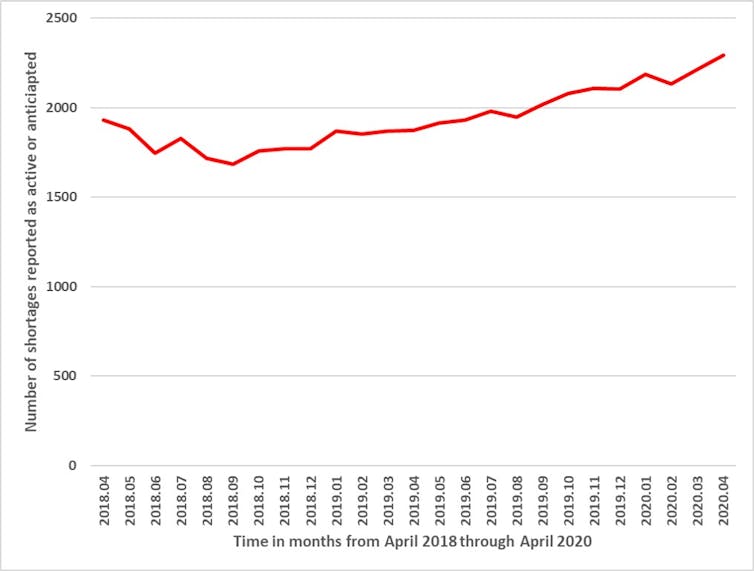R. Daniel Kelemen, a political scientist at Rutgers University who has studied what the United States could learn from European public policies, told me that those who subscribe to the ideology of American exceptionalism, or as he described it, “the notion that the United States is fundamentally different from and superior to other nations,” have traditionally resisted seeking out lessons from other countries’ experiences. At the very least, “this view leads many to think that the U.S. is simply so different that policies that might work in other countries could simply never work here,” he wrote in an email.
American exceptionalism has been pronounced dead numerous times, from the Vietnam War through the global War on Terror, and nevertheless managed to stick around through those difficult periods. But the coronavirus crisis may pose the greatest threat yet to the belief that America has little to learn from the rest of the world.
While U.S. policy makers do study other governments’ initiatives more than they necessarily advertise, American politicians typically resist engaging with ideas from abroad. Most U.S. public-policy debates, on matters including education reform and social mobility, occur in a bizarre vacuum, as if the encounters (good and bad) of the large majority of humankind with these same challenges yield no useful insights for the United States. On the rare occasions that politicians do invoke the policies of other governments, they often wield them as political props during highly polarized debates over issues such as health care and gun control.
And many American politicians, especially those on the right, have in recent years paradoxically doubled down on American exceptionalism (we have a president who ran on an “America first” platform, after all) even as American power has declined relative to other countries’.
This kind of insularity might have been “relatively harmless when America bestrode the world like a colossus, but it’s dangerous when the country faces a raft of global challenges from China, to climate, to COVID-19,” Dominic Tierney, a political-science professor at Swarthmore College (and a former contributing editor at The Atlantic), told me by email.
Pandemics are, in fact, particularly ripe moments for cross-cultural learning. Consider, for instance, the face mask. As Christos Lynteris, a medical anthropologist at the University of St Andrews relayed to me, face masks were invented during a 1910 outbreak of the pneumonic plague in Manchuria, by a Chinese doctor named Wu Liande, who was inspired by surgical masks he’d seen while studying in England. They caught on, in Wu’s telling, because of a fateful refusal to learn from others: Only after a French doctor who had declined to cover his face while treating patients died were the masks widely adopted.
Today, in the case of COVID-19, “all states face the same essential threat, and each government’s response is a kind of laboratory experiment,” Tierney said.
“The United States had the advantage of being struck relatively late by the virus, and this gave [us] a priceless chance to copy best practices and avoid the mistakes of others,” he noted.
Instead, the United States squandered that advantage on many fronts. The Obama administration had developed a playbook for pandemic response that drew in part on lessons from other countries’ experiences, but the Trump administration disregarded it. When China began confining millions of people to their homes in January, the U.S. government should have gotten the message that the Chinese were grappling with a grave threat to the wider world, the Yale sociologist and physician Nicholas Christakis told me in March. “We lost six weeks” in the United States to prepare—“to build ventilators, get protective equipment, organize our ICUs, get tests ready, prepare the public for what was going to happen so that our economy didn’t tank as badly. None of this was done adequately by our leaders.” By one estimate, from the epidemiologists Britta L. Jewell and Nicholas P. Jewell, if social-distancing policies had been implemented just two weeks earlier in March, 90 percent of the cumulative coronavirus deaths in the United States during the first wave of the pandemic might have been prevented.
Rather than using diagnostic tests that the World Health Organization had distributed to other countries early in the global outbreak, the Centers for Disease Control and Prevention insisted on developing its own, only to botch the rollout of those tests. Nations such as South Korea and Taiwan have raced ahead of the U.S. in their efforts to contain the outbreak.
Even now, as a number of countries have swum feverishly toward safer ground, the United States has spent the past couple of months of near-nationwide lockdown merely treading water. It has yet to roll out robust testing across the country, despite Donald Trump’s assertions since March that anybody who wants a test can get one. It has also failed to develop proper contact-tracing systems, as other nations have, and to meaningfully flatten the curve outside New York.
Amid all this, Trump has exhibited more hubris than humility. The president has repeatedly claimed that the United States is leading the world in testing, which in part is an unflattering reflection of the U.S. outbreak’s huge scale and also is not true on a per-capita basis. He has stated, referring to America’s coronavirus response, that German Chancellor Angela Merkel, Japanese Prime Minister Shinzo Abe, and “so many” other world leaders, “almost all of them—I would say all of them; not everybody would want to admit it—but they all view us as the world leader, and they're following us.” Even after he has asked the South Korean government to send tests and medical equipment to the United States to help combat the coronavirus, Trump is insisting that the country cough up much more money for the privilege of stationing U.S. troops there. It’s a measure of traditional American hard power that seems obsolete these days, relative to South Korea’s newfound clout as a world leader in addressing COVID-19. My colleague Anne Applebaum has argued that Trump’s proposal in April that people inject themselves with disinfectant, to the horror of scientists and laughter of people at home and abroad, marked an “acceleration point” for a “post-American, post-coronavirus world … in which American opinions will count less.”
As an example of ideas the United States could borrow from other countries, Tierney cited the fact that 750,000 people in Britain, which would be equivalent to nearly 4 million Americans, responded to the British government’s request to enlist in a “volunteer army” to help deliver food to vulnerable populations and provide other assistance. “How different might the American political scene be if the U.S. president had made a similar call for Americans to help?” he asked.
A number of countries that have had more success against the coronavirus have demonstrated greater open-mindedness about learning from their peers. Taiwanese officials are watching Iceland’s mass-testing efforts, while the German government is explicitly modeling its response after South Korea’s “trace, test, and treat” campaign.
Still, Kelemen cautioned that at least as far as European nations are concerned, they’re not all rushing to embrace the pandemic-response innovations on display around the world or necessarily concluding that those policy ideas are the right fit for them. “Things have moved so quickly that there hasn't been much time for considered lesson-drawing,” he noted. Some countries were slow to institute strict lockdowns, despite witnessing the horrifying spread of the virus in Italy, while others “embraced approaches that broke with the broader consensus,” including “Sweden’s proposal to pursue more of a herd-immunity approach.”
Nick Wilson, a public-health expert at the University of Otago in Wellington, told me that New Zealand’s record of learning from other countries is similarly mixed, despite its world-leading progress in combatting the virus. He noted that the government emulated Asian countries in instituting an early lockdown, and it recognized that “things could get very bad very quickly with COVID-19” after watching the outbreak play out in Italy. His colleague at the University of Otago, Michael Baker, told me that as a government adviser on the nation’s coronavirus taskforce, he was personally very influenced by a February 2020 WHO-China Joint Mission report, which suggested that the pandemic could be contained, and led him to advocate for New Zealand’s current strategy of eliminating the virus entirely from the country.
Yet Wilson added that New Zealand has lagged behind Asian countries in encouraging mass mask wearing, in rigorously quarantining incoming travelers, and in using digital technologies for contact tracing. New Zealand “still doesn’t learn quickly enough from other countries,” he wrote in an email. “It might have some prejudice against learning from Asia [because of] an assumption of cultural differences, even though places like South Korea, Taiwan, and Singapore are all democracies.”
In the United States too, even before the virus hit, attitudes toward learning from other countries were beginning to change. During the 2016 presidential campaign, Hillary Clinton critiqued Bernie Sanders’s proclivity to look to other countries for policy insights and innovations (“We are not Denmark. I love Denmark. We are the United States of America,” Clinton said), but many of Sanders’s fellow candidates during the 2020 Democratic primary echoed his admiration for other countries’ achievements. “The No. 1 place to live out the American Dream right now is Denmark,” Pete Buttigieg stated during one debate.
Some shifting is even occurring on the right. As a Republican presidential candidate, Mitt Romney condemned Barack Obama for not believing in American exceptionalism, and spoke of “standing a little taller” when he traveled abroad, because as an American he “had a gift that others didn’t have.” Now, as a senator, Romney is urging the U.S. government to follow South Korea’s lead and “learn from those countries that were successful” in dealing with their outbreaks. Conservatives are championing Sweden’s laissez-faire approach as a blueprint for how to mitigate public-health damage while preserving freedom and the economy.
“There has actually been some discussion—even in conservative circles—of taking lessons from countries like Germany regarding its Kurzarbeit program of wage subsidies for employers who keep staff on payroll,” Kelemen said. But he added that, with the exception of the U.S. Paycheck Protection Program, “most of our economic-policy response has ignored useful lessons from abroad, explaining why our unemployment rate is skyrocketing above those in many other affected countries.”
Kelemen noted that the coronavirus crisis has led to a surge in interest among the American public and U.S. policy makers in harvesting lessons from other countries, most evident in the fact that everyone is following “the comparative charts of how countries are doing over time on infection rates or changes in year-on-year death counts.” And there have been other periods in U.S. history when American policy makers were more open to exploring and experimenting with policy ideas from other countries, including during the Progressive movement of the late 19th and early 20th centuries, he added. Perhaps this could be another one of those periods.
The United States, of course, still has tremendous capacity to teach. But it also may need to emerge from this crisis recognizing that it has equal capacity to learn. To learn is to admit room for improvement, and thus to improve, especially in dealing with modern-day threats such as pandemics, which America doesn’t have much experience contending with as a superpower. The United States could, for example, easily seize on the momentum among many of its allies to pool lessons learned and coordinate policies to combat the virus and reopen economies.
As C. Jason Wang, a Stanford professor who has studied Taiwan’s COVID-19 response, told me in March, “Taiwan ran out quickly” to confront the virus, but the United States is still a “giant” with “a lot of capabilities.” And “once it starts running, it runs fast.”







